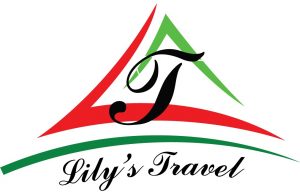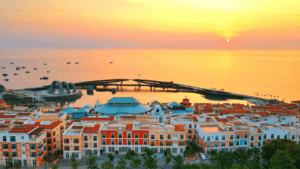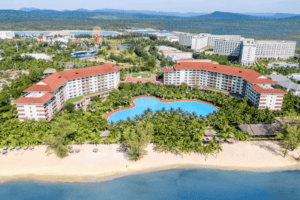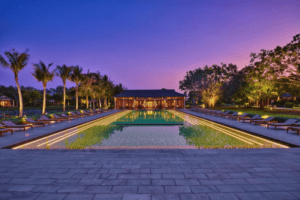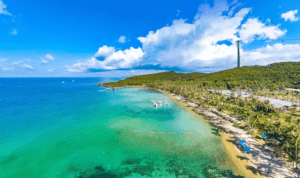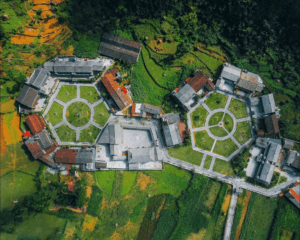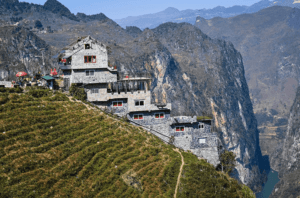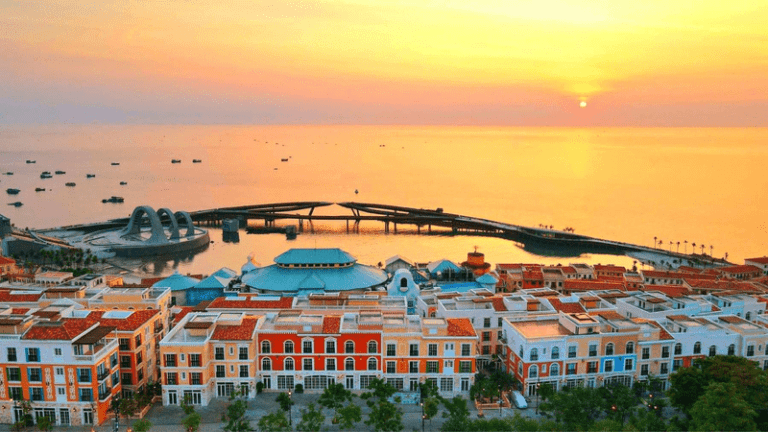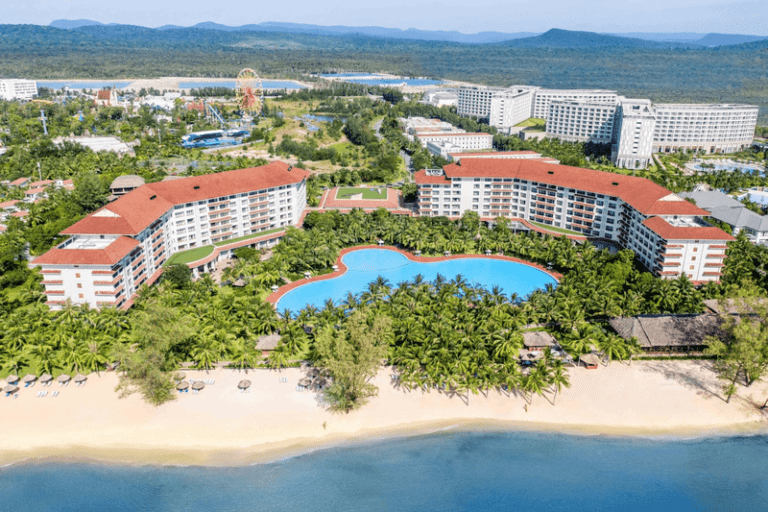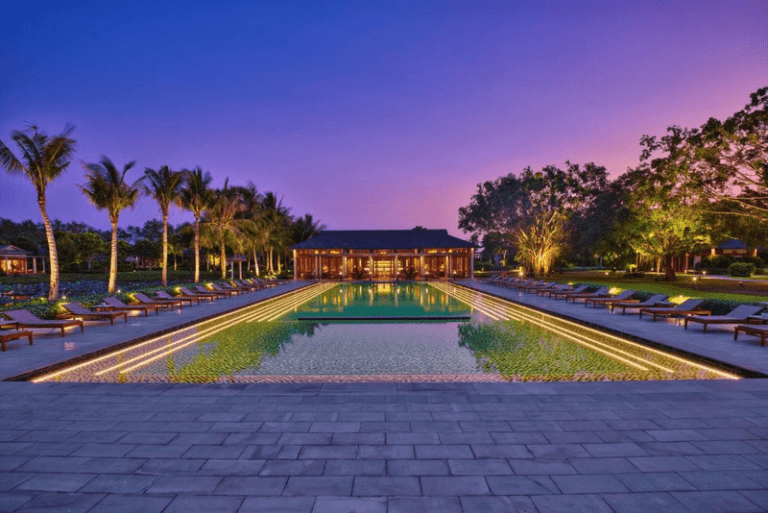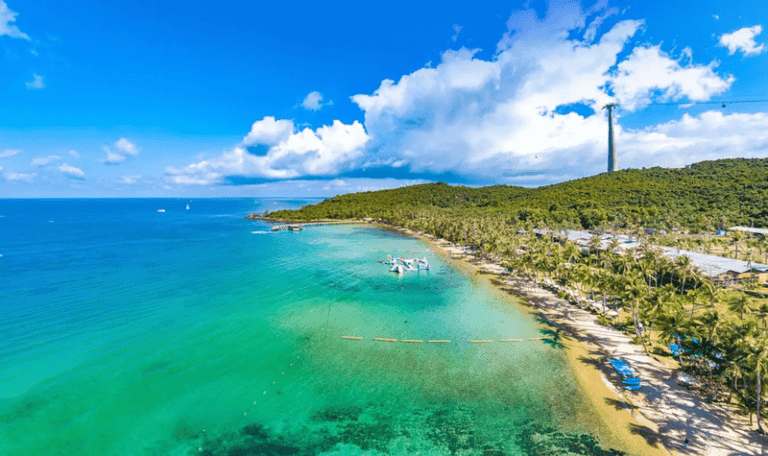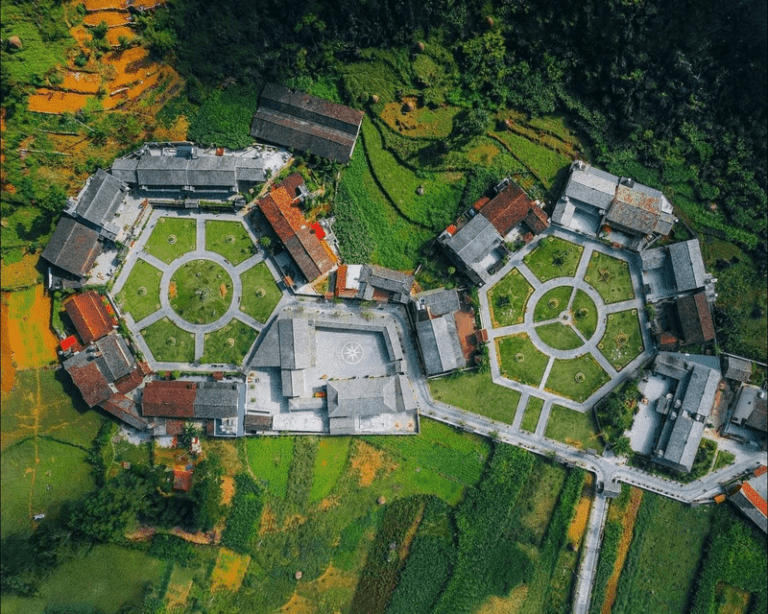My Son Sanctuary, located in Duy Phu commune, Duy Xuyen district, Quang Nam province, is a mysterious and unique architectural complex with over 70 Champa temples. It is 69 kilometers from Da Nang and 45 kilometers from Hoi An historic town.
My Son Sanctuary was found in 1885 and was designated a World Cultural Heritage Site by UNESCO in 1999. This is a particularly important national relic, a famous, sacred and attractive tourist destination. the leading leader of Quang Nam.
Read more: My Son Sanctuary – The architectural structure of the unique Champa temples
Directions to My Son Sanctuary from Hoi An
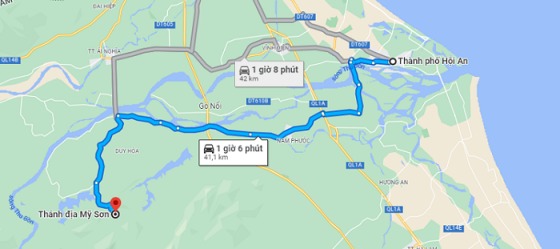
The relic is located in a valley with a diameter of about 2km, surrounded by mountains. To move to My Son Sanctuary, you can choose to depart from Hoi An or Da Nang by means of transport such as car, bus, motorbike.
The road from Hoi An to My Son Sanctuary is about 40km. If traveling by car or personal motorbike, you follow the route Tran Hung Dao – Cam Kim Bridge – Duy Phuoc Bridge – Truong Sa Street – Hung Vuong Street – Provincial Road 610, to Duy Phu you will see the road turning into My Son Sanctuary.
My Son Sanctuary is considered the largest temple complex of the Champa Kingdom in the coastal area. Bearing the imprint of Indian civilization, it is located southwest of Hoi An and is located in a beautiful emerald valley. Exploring My Son from Hoi An offers two options for viewing this incredible landscape. If you’re an early riser, take the My Son Morning Tour by Bus, which saves you from the hot weather and crowds. In addition, you will have more time to explore Hoi An during the day. If you prefer to explore on a regular basis, take the My Son Discovery Tour by Bus that starts at 8am and takes you safely to My Son and ready to explore.
General information about My Son Sanctuary
My Son Sanctuary in Quang Nam is known as one of the top 10 most beautiful and famous temples in Southeast Asia. This is a sacred destination, attracting many tourists to visit. So what’s so good about My Son Sanctuary? Let’s explore the highlights of this destination right away.
A long history
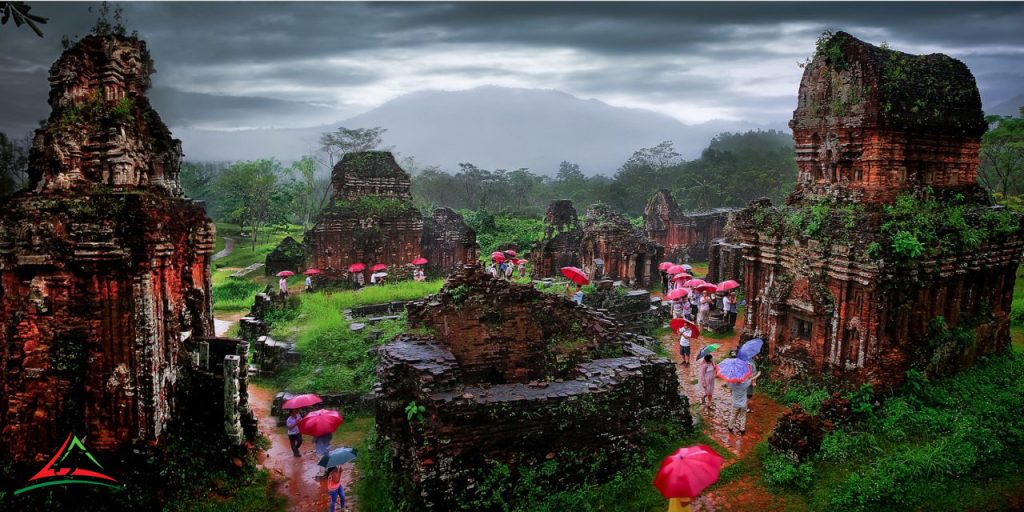
My Son Sanctuary was built in the 4th century by King Bhadravarman and ended in the late 13th and early 14th centuries under the reign of King Jaya Simhavarman III. This is a complex with more than 70 temples and towers with unique architecture, symbolizing each historical period of the Champa kingdom. This complex was built with the purpose of worshiping the gods Linga and Shiva.
However, due to the invasion of the Ancient Kingdom – Dai Viet – the temples were abandoned. Until 1889, a group of French explorers came to visit Vietnam and “reawakened” this place.
Due to the destruction of the war, by 1975, the temple complex had only 32 buildings left. Of which, 20 buildings are still intact as the original. Experiencing many historical events, My Son Sanctuary is still a relic imbued with artistic and cultural values that crystallize the wisdom and quintessence of many generations. On December 1, 1999, UNESCO designated the artifact as a World Cultural Heritage site.
The mysterious and unique architecture of My Son Sanctuary
In general, the architecture of My Son Sanctuary is influenced by Hinduism. The temples are made of brick and stone and face east – the direction of the rising sun – where the gods live. The temple and tower are separated into three sections: the base of the tower, the body of the tower, and the top of the tower.
A temple or tower will worship a different god or king dynasty. As a result, each project is like a puzzle piece, re-creating the historical flow of the Champa Kingdom. The relic is divided into areas including:
- Area A: Where visitors can see the entire temple complex. The majority of the structures in this region are being renovated.
- Area B contains one main tower and three ancillary towers. This location is on the western hill.
- Area C contains many temples, towers, inscriptions, reliefs, and some of the most impressive and unusual sculptures in My Son Sanctuary. Area C is located on the southern hill and is an absolute must-see when visiting this collection of monuments.
Kate Festival – a unique traditional festival of the Cham people

Coming to this place, visitors can not only admire the architectural works of high artistic value, learn the meaning of My Son Sanctuary, but also have the opportunity to discover the cultural beauty of the Cham people. One of them is the Kate festival.
This is a traditional Cham event that is very important to them. According to the Cham calendar, the event is held in July each year, and it is an occasion for Cham people to remember their ancestors, grandparents, and to pray for the proliferation of all things.
Besides, Kate festival is also the crystallization of cultural values in the community life of the Cham people. Visitors to the festival will have the opportunity to explore various traditional rituals of the people here, such as praying for peace, water procession, palanquin procession,… and watch incredibly appealing performances of traditional musical instruments.
Apsara dance: The soul of stone
It is hard to discuss the Cham people without mentioning the Apsara dance. he dance is inspired by Apsara stone sculptures, which are a characteristic feature of Champa music.
It can be said that Apsara is a harmonious combination between each move, skillful and flexible hand movements and the beautiful beauty of Cham dancers with the sound of Paranung drums and Saranai trumpets. All of this contributes to an enthralling spectacle that spectators find difficult to look away from.
The ancient road leading to the holy site is up to 8m wide
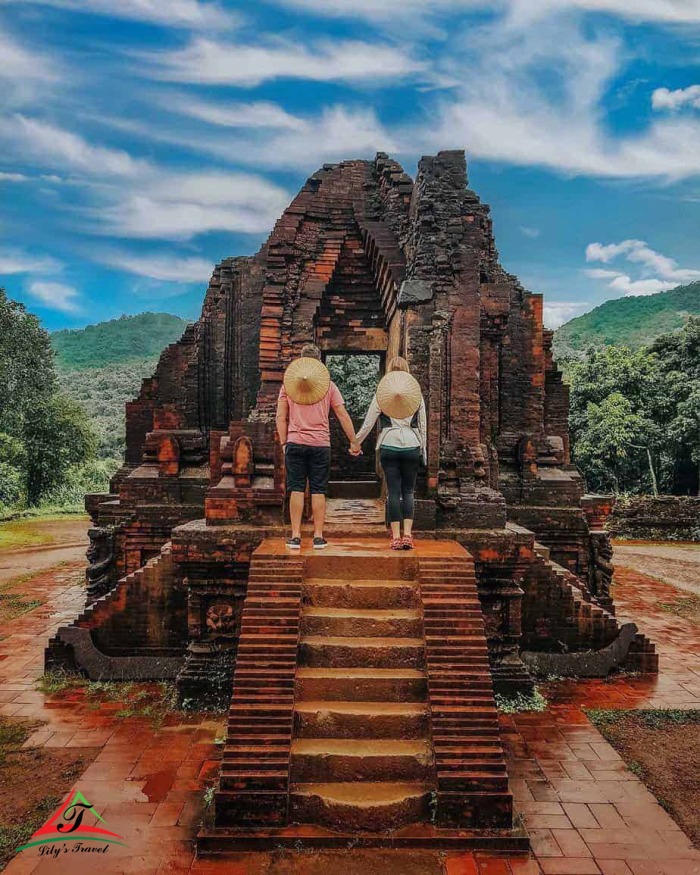
An Indian specialist uncovered this path while working on temple renovation. This is an ancient road leading directly to the center of My Son Sanctuary with a width of 8m, two parallel walls are delicately carved and buried in the ground at a depth of 1m.
According to historical records, only monarchs, members of the royal family, and dignitaries are permitted to stroll on this avenue. This is also the route that leads to the huge tower where ancient Cham sacrifices were held.
Other attractive tourist places around My Son Sanctuary
In the journey to discover My Son Sanctuary , you can also combine visiting some attractive tourist attractions around this destination. Here are some famous destinations, within a radius of 50km from My Son Sanctuary that you can refer to:
Sa Huynh Culture Museum – Champa
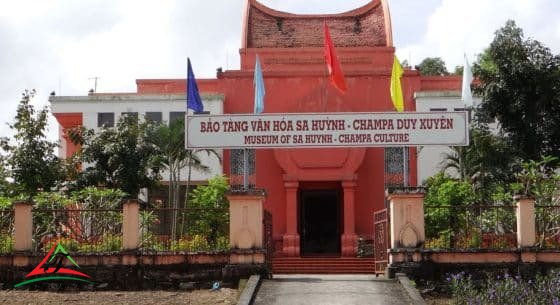
Sa Huynh Culture Museum was established in 1994. This is the place to display 946 artifacts related to the ancient inhabitants of Sa Huynh culture system, some artifacts at Bai Ong site – Cu Lao Cham. Coming here, visitors will have the opportunity to learn more about the life and customs of the ancient people of the Sa Huynh culture system such as aesthetic perception, burial customs, conception of life and death, etc.
Tra Kieu Church
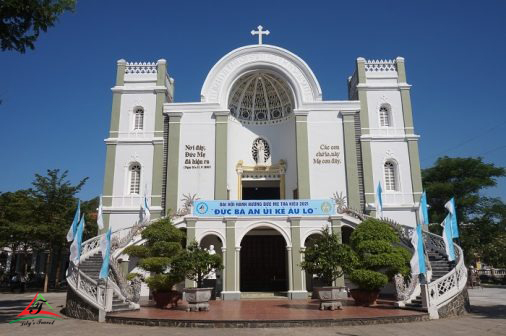
The Champa capital used to be located in Tra Kieu. This is also an area where many Catholics live with famous works, notably Tra Kieu Church.
The church was built in European architecture with 2 floors: the upper floor is the cathedral, the lower floor is a place for religious activities. The cemetery of Bishop Peter Maria Pham Ngoc Chi is located next to the church. This is also a place that attracts many tourists to visit and visit.
What to bring on
Umbrellas or raincoats, cold coats (October-February)
If you wish to sleep on the bus, bring earplugs.
Scarves or clothes that cover the knees and shoulders
Read more: Ba Na hill tour from Hoi An: Should you choose to take a tour or be self-sufficient?
Find out more about Da Nang tours here:
